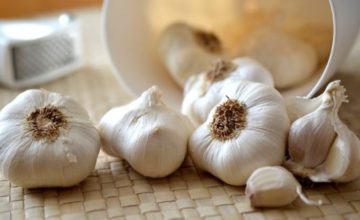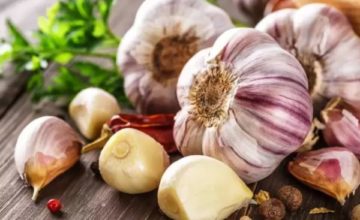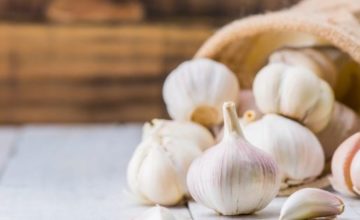
Considered one of the closest relatives of onions, garlic is a widely used vegetable that has a very pungent flavour and smell.
It is considered an important ingredient in several cuisines and brings a unique flavour to a dish.
Garlic is an inexpensive ingredient that’s used to flavour dishes and often comes in white colour and grows in the form of a bulb.
Here are some of the popular types of garlic that are often used in not just Asian but African, European, and even American cooking.
Take a look.
1. White garlic
White garlic is what you’ll typically see in most grocery stores. It comes from a variety called soft-neck garlic, meaning the stalk doesn’t grow through the centre of the bulb. One garlic bulb will have cloves of all different sizes and shapes, with larger cloves around the outside and smaller ones in the middle. The stalk at the stem end of the garlic stays flexible, or soft — that’s why white garlic bulbs are traditionally braided together. This garlic grows easily and is harder as compared to others. When it’s fresh, white garlic has a powerful garlic flavour.
2. Purple garlic
Purple garlic has a purple hue to its papery skin, though the inner cloves are the same colour as white garlic cloves. It comes from a variety called hard neck garlic. There’s a woody stalk that grows right through the centre of each bulb. The cloves grow around this stalk and tend to be all the same size — a bit larger than white garlic cloves. Purple garlic cloves are ‘juicier’ and have a milder flavour than white garlic when fresh. You might see purple garlic in some supermarkets, but it’s more likely to be found in speciality markets and at farmers’ markets.
3. Black garlic
Black garlic can be found on menus everywhere, but this unique ingredient isn’t anything new. It has been used for flavour and traditional medicinal purposes and in a variety of Asian cuisines for centuries. Black garlic is, simply put, the product of ageing regular garlic bulbs over the course of weeks or months, a process called the Maillard reaction. It requires strictly regulated temperature and humidity to achieve its sticky consistency. With a softer, molasses-like flavour, it is a more delicate option than the raw bulb. What’s the best part? It’s versatile and can be swapped out for regular garlic in most recipes. It is a beautiful addition to any cheese plate, bruschetta, chicken dish, or even as a pizza topper.
4. Pink garlic
Pink Garlic, also locally known as “Gavthi Lassan” is a variety of garlic that can be identified by its rosy-cheeked cloves. Pink garlic bulbs are small, around 5 cm in diameter with each bulb containing not more than 10 pink cloves. These crisp, pungent cloves are hidden below a white, translucent outer wrapper, which when removed showcases the off-white bulbs wrapped in pink covers. This variety of garlic is comparatively more sweet tasting, with an aroma that is sharper than its more popular white counterpart. Pink garlic is known to be warm and highly pungent, with some even declaring it a connoisseur’s garlic, given its unique robust flavours. Its cloves are juicy and crisp but slightly less sticky than regular garlic. Pink garlic can be used raw or cooked, much like regular white garlic and can be chopped, crushed or sliced as per choice. This garlic can be added to any dish that calls for the use of garlic and is a good source of vitamins A, B, C, and minerals like copper, magnesium, calcium, potassium, iron and zinc. Pink garlic can be stored for about six months to a year if kept properly and can be used to accentuate the flavour of your favourite meal.
Which one is better?
Irrespective of colours, all types of garlic are important and are used in different ways to cook dishes. However, on the comparison, purple garlic is said to be the juiciest and mild flavoured garlic that one can use in their dishes. It also brings a very unique flavour to the dish, which cannot be compared with any other garlic.




